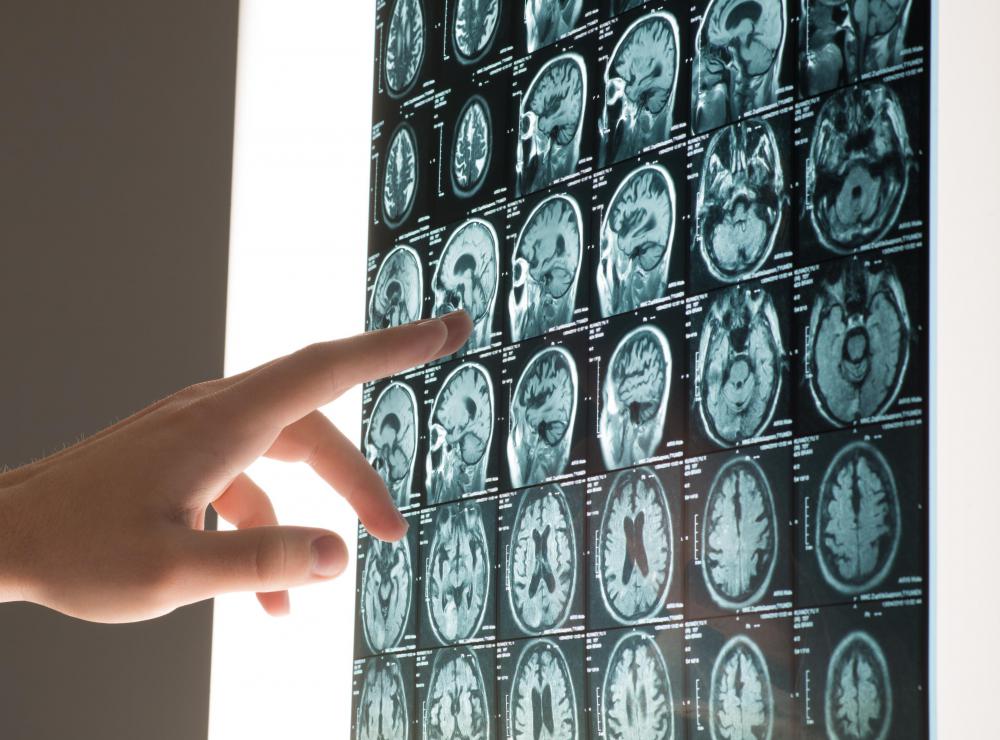At TheHealthBoard, we're committed to delivering accurate, trustworthy information. Our expert-authored content is rigorously fact-checked and sourced from credible authorities. Discover how we uphold the highest standards in providing you with reliable knowledge.
What is Nuclear Magnetic Resonance Imaging?
Nuclear magnetic resonance imaging (NMRI) — also known as magnetic resonance imaging (MRI) — is a medical technique used to take images of different parts of the human body to help with diagnosis. A nuclear magnetic resonance image provides a much greater level of contrast compared with other imaging techniques such as CT scans. Some of the areas of the human body that can be imaged especially effectively with an NMRI scan include the brain and musculoskeletal system. Compared to other imaging techniques, NMRI is a relatively new technology and has been used since the late 1970s.
Nuclear magnetic resonance imaging machines make use of the fact that the body is mainly made from water. Water contains two protons that are affected by a magnetic field. The NMRI machine produces a strong magnetic field, which makes the protons align in a certain direction. Once the protons are aligned, a radio wave is transmitted at just the right energy to “flip” the protons, which then “flip” back once the radio wave disappears. When the protons flip back they can be detected by the machine, creating a map of the area of body.

One of the most effective applications of an NMRI machine is to identify cancerous from regular tissue. This is often how brain tumors are detected. Another example is to detect problems in a joint such as the knee. An MRI provides much more information than an X-ray in this case as it can image the tissue of the joint rather than just the bone structure.

A major benefit of an MRI machine compared to other forms of imaging is that it is harmless. Instead of using high-energy radiation such as in X-ray machines an MRI uses magnetic fields, which aren’t thought to cause any negative side effects. MRI images also provide much greater contrast between different types of tissue, which aids in diagnosis.
Nuclear magnetic resonance imaging systems rely on the development in physics of nuclear magnetic resonance. For this reason the first machines were called nuclear magnetic resonance imaging machines. This name, however, was later changed to magnetic resonance imaging as it was thought that the term nuclear had negative connotations in the public eye. For this reason, most in the medical profession now use an MRI rather than NMRI. Scientists, however, use NMRI for machines which use the same techniques but aren’t used for medical purposes.
AS FEATURED ON:
AS FEATURED ON:















Discussion Comments
There is, however, the noise factor associated with an MRI scan. The process is a bit lengthy and so patients would be given ear plugs to reduce the effects of from the noise.
The MRI along with the ultrasound (which does produce a heating effect) are by far the safest medical diagnostic tools.
@David09 - This is an excellent article on how an MRI CT scan works. Honestly, I didn’t realize that an MRI was different than an x-ray, even though the name (magnetic resonance imaging) should have been a clue.
I guess I never put two and two together. This is comforting, because as a matter of principle I avoid x-rays as much as possible due to concerns about repeated exposure to radiation. It’s nice to know that, if needed, I can get multiple MRI scans without any concerns about harming my health.
My wife works in a job where she has to stand up all day (pharmacy technician). As a result of repeated strain on her back, she went in for an MRI lumbar scan. It showed she had a mild form of bulging disc.
That wasn’t exactly the news that I wanted to hear, but the scans appeared to be pretty accurate, and at least it gave us something to work with.
She went to see a physical therapist and has been doing some exercises, which seemed to help. Also she bought an inverted table, which basically flips you almost upside down, and this relieved pressure on her neck. It seems to be helping.
Post your comments